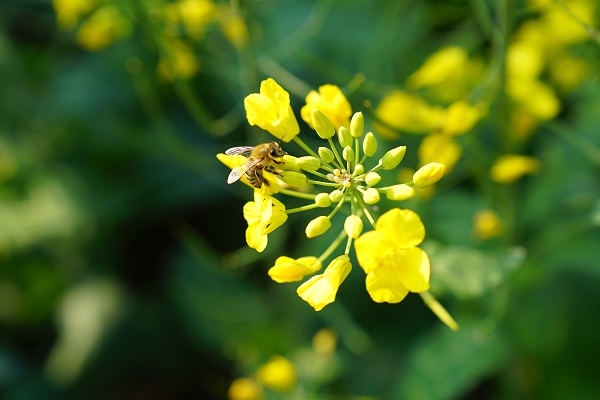
Young Honey Bees Learn Waggle Dancing By Observing Older Bees, Just Like Kids Follow Their Dad.
Researchers from the University of California San Diego and the Xishuangbanna Tropical Botanical Garden (XTBG) of the Chinese Academy of Sciences have shown that honey bees employ social signal learning to boost their ability to waggle dance in a study that was published in Science today.
Like human children, birds, and other vertebrate animals, researchers found that honey bee signaling is influenced by social learning.
When a person learns from observing or interacting with another person, this is called social learning. Eusocial insects (insects with a high level of social organization) learn from each other, but it’s not clear if this learning affects their communication, which can be very complex and sophisticated.
By doing waggle dances, honey bees tell their nestmates where to find things like food, water, tree resin (called propolis), and nest sites. Workers in a hive of honey bees employ social learning by watching and imitating their leaders’ waggle dance to discover new locations and assess the quality of nearby supplies. In any case, whether juvenile waggle dancers’ performances may be enhanced by learning the dance or if the dance is entirely pre-programmed genetically (innate) remains an open question.
The waggle dance, as previously mentioned, is typically performed by a successful forager, i.e., one who has discovered a good source of pollen, nectar, or water, and it conveys information about the presence, quality, identity, direction, and distance of the source so that nestmates can find and use it.
The researchers set up colonies where they could watch the first waggle dances done by foragers who had followed other waggle dancers or had not. A single group of one-day-old bees was used to start each of the five test colonies.
“As these bees aged,” adds first author Dr. Dong Shihao, “we monitored the colonies until we observed the first waggle dances and then observed the same dancers 20 days later when they had more foraging and dancing experience.”
It was discovered that bees which hadn’t had a chance to observe any dances before their initial dance exhibited considerably more chaotic dances, with greater discrepancies in waggle angle divergence and incorrect encoding of distance.
“When the same bees were older and had experience of dance following and dancing,” remarks the first author, “they significantly reduced divergence angle errors and produced more orderly dances. However, they were never able to produce normal distance encoding.”
The results show that learning social signals can make waggle dancing better. But why do honey bees need to learn from each other to get better at waggle dancing?
Refining behaviors to suit local conditions through learning can be highly beneficial.
According to TAN Ken from XTBG, the distinctive layouts of dance floors in each colony offer advantages for inexperienced dancers to learn from their more skilled counterparts. Alternatively, experienced dancers could also convey distance encodings to other members of the colony based on local optic flow.
Source: 10.1126/science.ade1702
Image Credit: XTBG
URL: https://www.revyuh.com/news/science-and-research/animal-studies/young-honey-bees-learn-waggle-dancing-by-observing-older-bees-just-like-kids-follow-their-dad/

